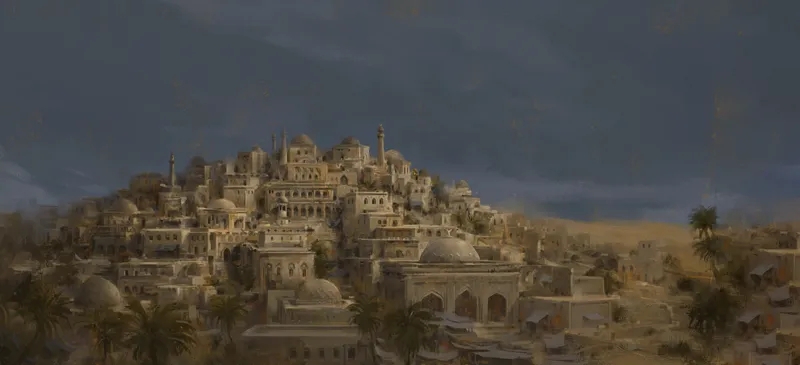Khwarezmian Culture

Commands
The following command will set your culture to 'Khwarezmian.'
The following command will change the culture of the specified county to 'Khwarezmian.'
Information
| Name | Khwarezmian |
| Culture ID | khwarezmian |
| Heritage | Iranian |
| Ethos | Stoic |
| Language | Scythian |
| Architecture | Arabic |
| Fashion | Arabic |
| Coat of Arms | Iranian |
| Military Equipment | Arabic |
Overview
The Khwarezmian culture represents an ancient civilization that thrived along the delta of the Amu Darya River, an area known as Khwarezm. Often described as an oasis civilization, it was centered in the region that is now split between present-day Uzbekistan and Turkmenistan, right at the crossroads of the great Silk Road trade routes.
Historical records indicate that the height of the Khwarezmian Empire was in the 12th and 13th centuries, acknowledged for its significant advancements in mathematics, astronomy, agriculture, and art. Scholars like Al-Biruni and Avicenna, known for their contributions to science and philosophy, are believed to have links to this culture.
Khwarezmian architecture was significant and quite unique, encompassing elements of Persian and Turkic styles, seen in their mosques, minarets, and mausoleums. Their pottery, typically with geometric designs and bright colors, exhibited intricate details reflecting remarkable craftsmanship.
Perhaps the most distinct aspect of the Khwarezmian culture was their writing system. It involved a unique blend of the Arabic script with the older native script, which still perplexes linguistics scholars today.
The Khwarezmian culture was significantly hindered by several invasions, most notably by the Mongols in the 13th century. Nonetheless, their cultural legacy continues to influence Central Asian societies to this day.
Stoic Ethos

Stoic Ethos
This culture believes in standing strong like a mountain, taking any and all hardships that life may throw at them and enduring them all with grim determination and an indomitable spirit.
- +5 Defender Advantage
- -15% Stress Gain
- -15% Friendly Fatal Casualties
- +0.25 Disease Resistance Health Boost
Each culture will have an ethos, which represents the core values, principles and attitude towards life that the culture has. It also determines which court types are available for kingdoms and empires.
Khwarezmian Traditions
- Caravaneers
- Dryland Dwellers
- Futuwaa
- Isolationist
Each culture will have several traditions, which represent the main customs of a culture and can grant various effects. A culture can have up to five traditions in the tribal era, with every additional era reached granting an additional slot for Traditions.
Khwarezmian Architecture
Arabic

Iranian Cultures
The following are the IDs of cultures that share the same heritage, Iranian, as the Khwarezmian culture:
| Culture | Culture ID | Ethos |
|---|---|---|
| Afghan | afghan | Communal |
| Baloch | baloch | Communal |
| Daylamite | daylamite | Bellicose |
| Khwarezmian | khwarezmian | Stoic |
| Kurdish | kurdish | Communal |
| Persian | persian | Ceremonious |
| Saka | saka | Bellicose |
| Sogdian | sogdian | Egalitarian |
| Tajik | tajik | Spiritual |